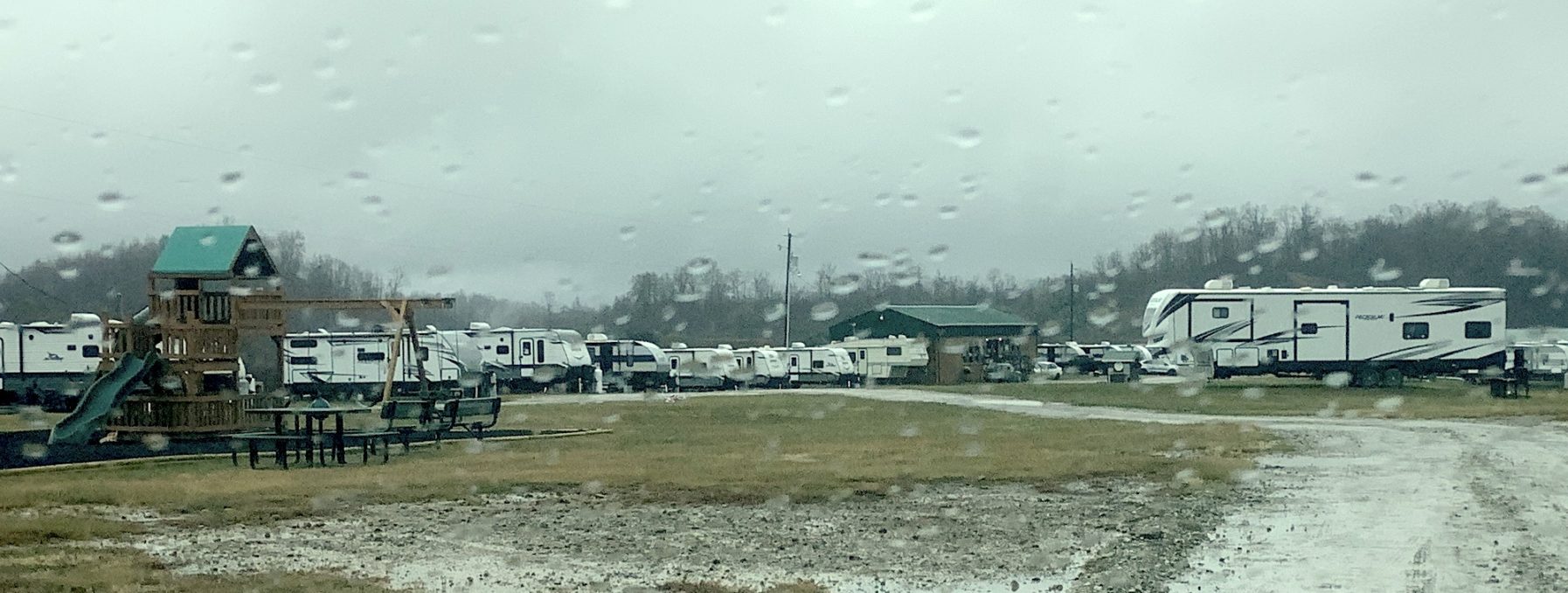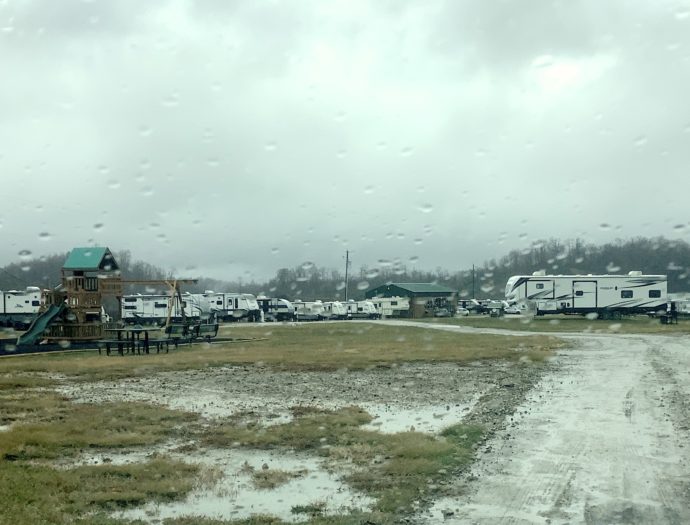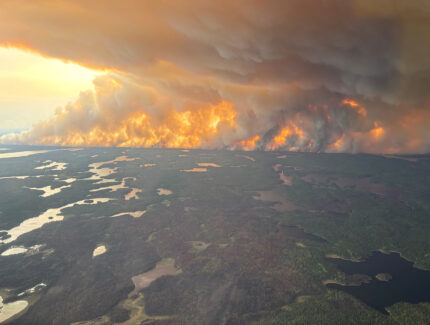


January 13, 2023
The Flooding Enigma
By Lois Wenger
Campers atop a former strip mine. FEMA provided these for families displaced by the flood.
Eastern Kentucky is no stranger to floods. I used to live there and survived some myself. So what happened in July of 2022 that made it so much worse than anyone had ever experienced?
Several things:
- The water rose at night.
- The water rose fast.
- The water rose higher than ever before.
Ah, that last component of destruction! Familiarity was actually a significant reason so many lives were lost. The people had been through floods before. They knew how quickly and how high the water rises. They knew how long it takes the water to go down. No need to panic! It happens every year.
But this time was different. There were warnings, yes, but some warnings went unheeded…and with fatal results.
Many places in eastern Kentucky have no “flat” acreage except for a strip of land beside the creek or where a bulldozer has leveled it out and/or dynamite has blasted the mountain away. And in a culture that grew along the creeks and up the hollers, creekside is home.
Voices from outside the area cry, “Build higher.” And some folks arebuilding higher in hopes of escaping the next flood. But it is a culture change that will not happen overnight.
Phil Swartzentruber, co-chair of the Long-Term Recovery Team, said that many people want to get out of the floodplain. And although people want to leave, “most people do not want to move out of their community into another community. Often the place where they live, that got flooded, has been in the family for generations, and to leave that area feels like you’re leaving your family history.”
John is one who is making the move; he is leaving his low-lying (flooded) home in favor of a mountain one. But that has its drawbacks, too. The house MDS is helping him build this year is a mile up a narrow, rough, steep, curvy, unpaved road. (The MDS truck even needs to back up to make it around one of the corners!)
Strangely enough, though, eastern Kentucky now has some very flat, very high ground: the abandoned coal strip mines of yesteryear!
Phil says, “Some of them are being researched as possibilities for housing developments.” But the real estate can be difficult to obtain. Swartzentruber continued, “Some are owned by individuals residing in the county, others are owned by coal companies, and some are tied up with many heirs through inheritance.”
And there’s another problem. “Developing the land and getting it ready for buildings can be difficult,” he said. “In some cases, the remote location makes getting utilities and building roads very expensive, but we are committed to looking at all options to provide housing for people who were affected by the flooding,” concluded Phil.
Three more new builds have been assigned to MDS, above the floodplain! As such, they will support the upward trend.
A change is beginning to occur. Give it time.
* Lois Wenger, a frequent MDS volunteer, lives in Port Henry, New York.





